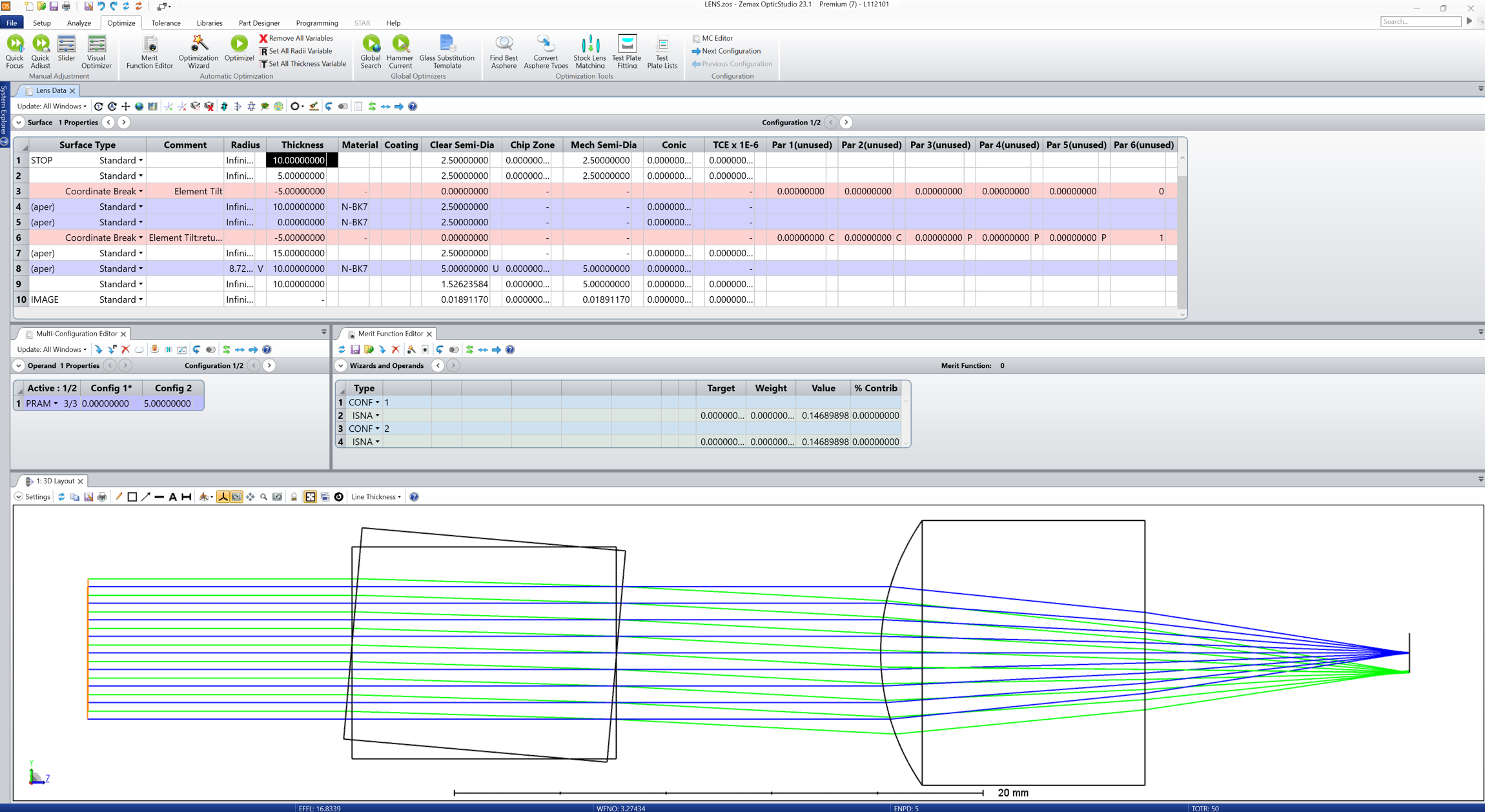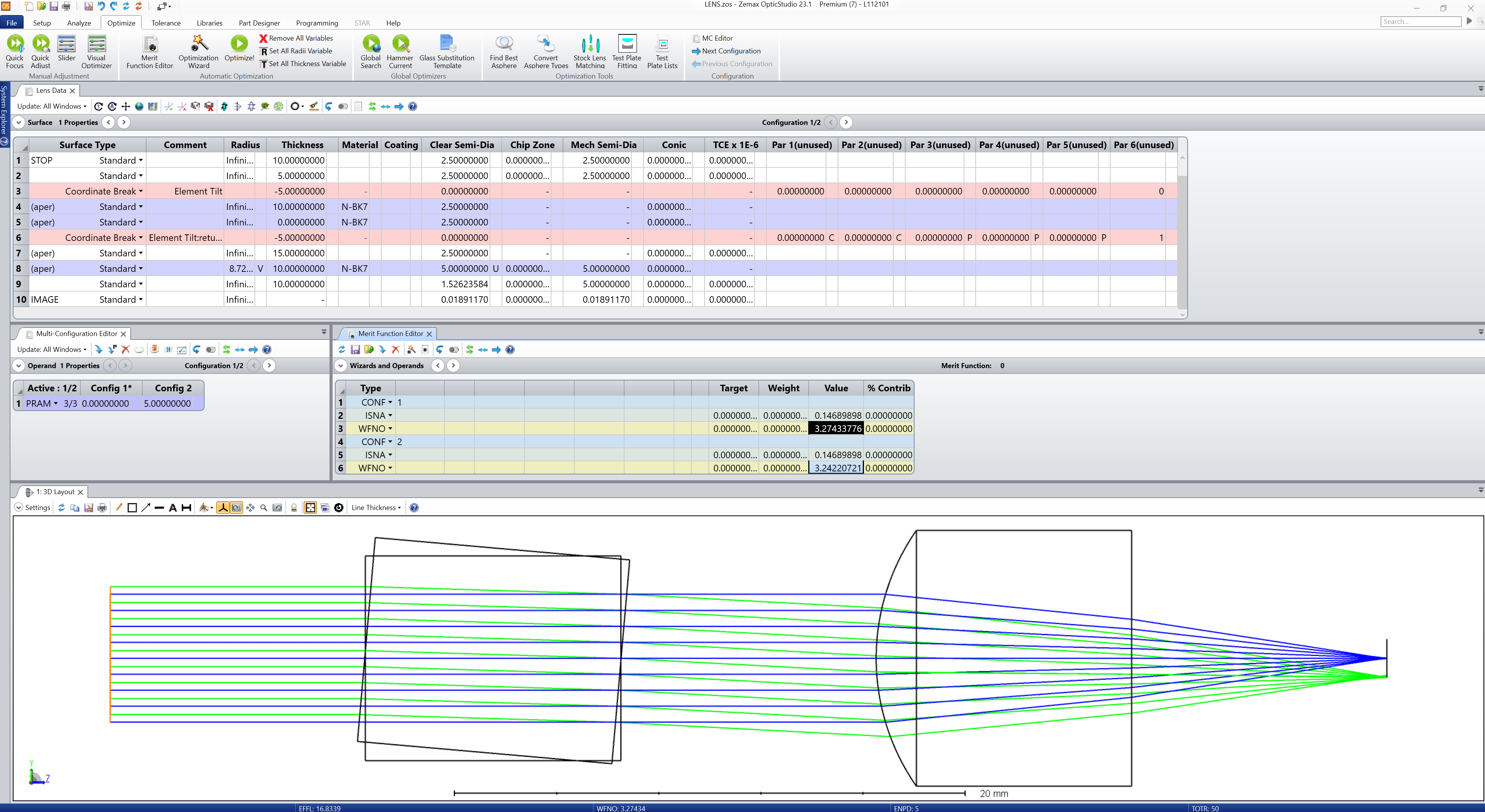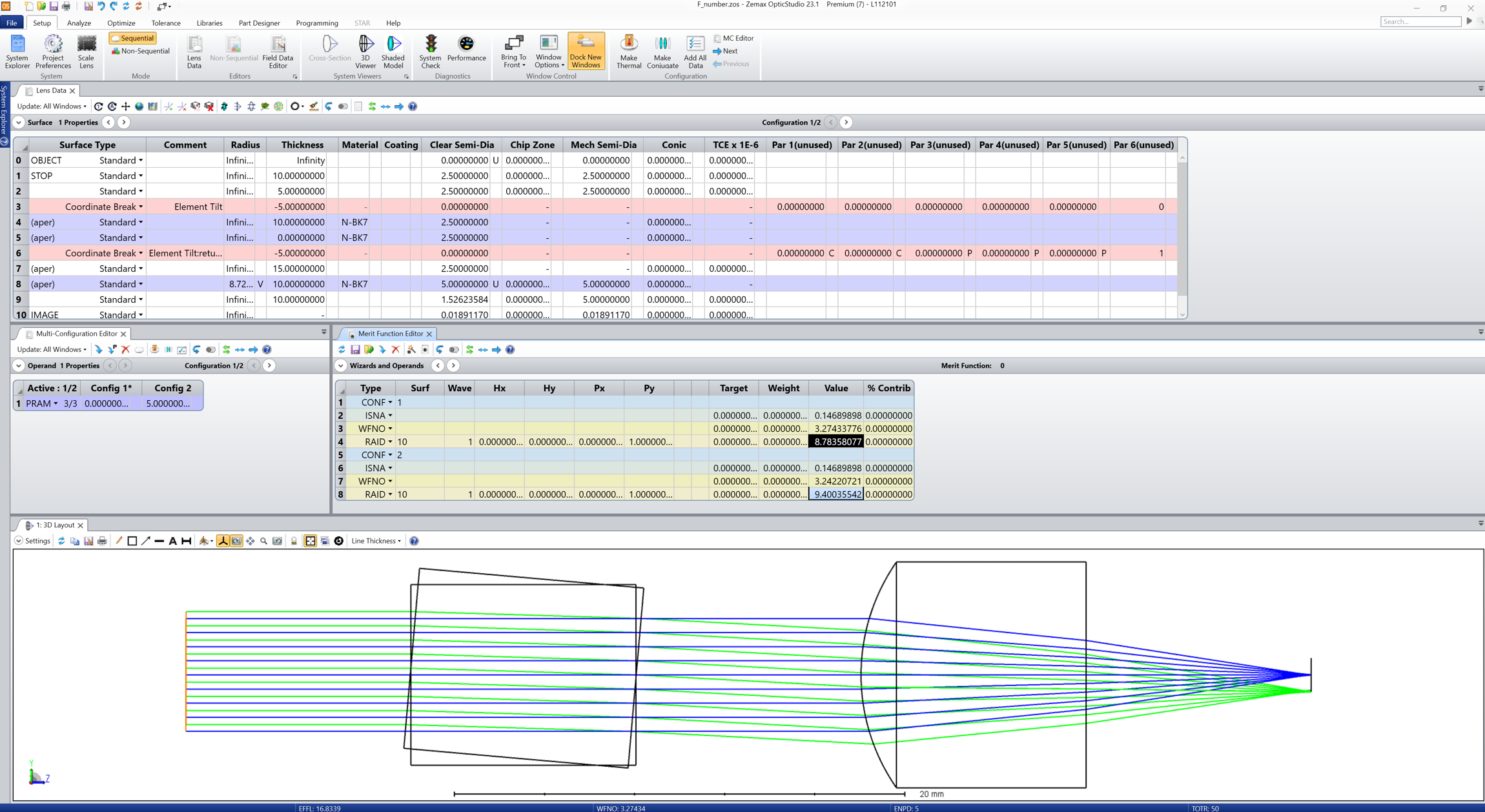Dear Community,
Does system F# change if we will place a parallel plate at an angle (Glass slab) into the collimated beam coming at different angles (System FOV)?
I think It should not!!!! as both the surfaces of glass slab is flat (or having no power).
I am attaching couple of screenshots for the same.
In the below screenshots I am keeping the Glass Slab position same for all Fold mirror rotation angle (45 to 70 Degree), with the help of couple of Coordinate Breaks (CB).
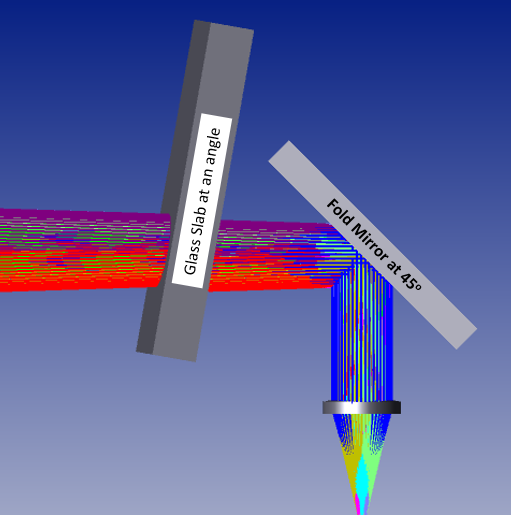
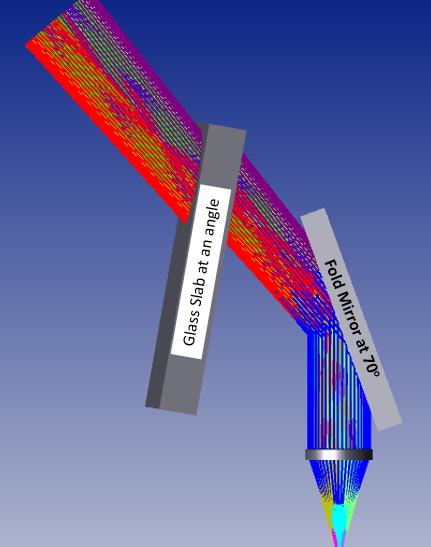
The system F# is different for above two configurations. Is this the real scenario?
Or, System F# should remain same irrespective of fold mirror tilt?
Thanks.





